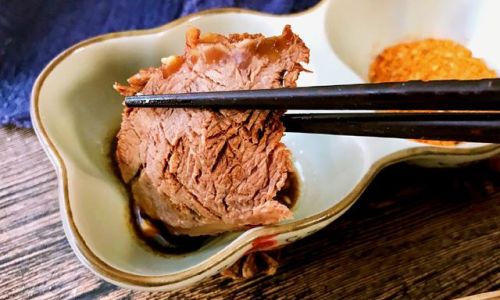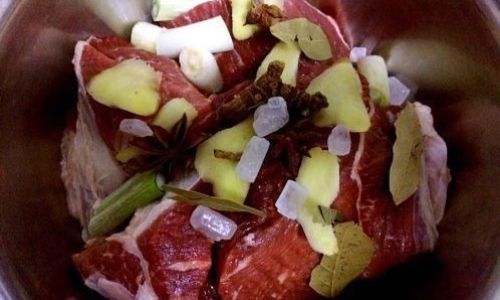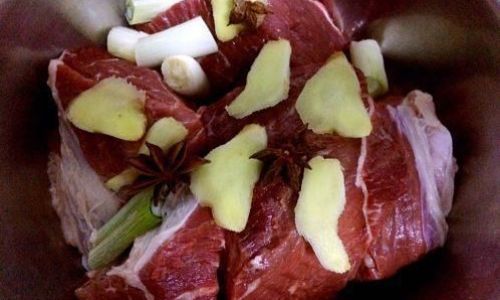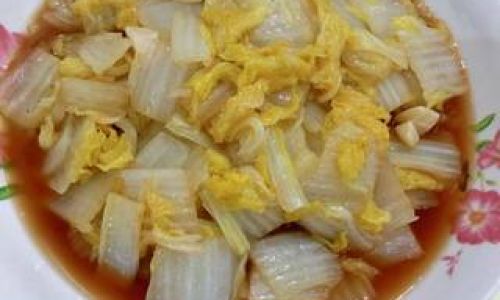Table of content
Sauce beef, a beloved dish in many cuisines, is celebrated for its rich flavors, tender texture, and versatility. Whether served as a centerpiece at a dinner party, sliced thinly for sandwiches, or paired with noodles and rice, this dish has earned its place as a comfort food classic. Today, we invite you into the kitchen of a seasoned chef who will demystify the art of making sauce beef, sharing professional techniques to elevate your home cooking. From selecting the finest cuts of meat to achieving the perfect balance of sweet, salty, and umami flavors, this guide ensures your sauce beef will rival any restaurant-quality dish.
Ingredients: The Foundation of Flavor
Before diving into the cooking process, assembling the right ingredients is crucial. Here’s what you’ll need to create a batch of sauce beef that bursts with depth and complexity:
- 2 lbs (900g) beef brisket or shank: Opt for well-marbled cuts with connective tissue, which break down during cooking to create tender, melt-in-your-mouth texture.
- 1 cup (240ml) soy sauce: Use a combination of dark and light soy sauce for color and depth.
- 1/2 cup (120ml) Chinese cooking wine (Shaoxing wine) or dry sherry.
- 1/4 cup (60g) brown sugar: Adjust to taste for a caramelized sweetness.
- 1/4 cup (60ml) hoisin sauce: Adds a thick, sweet-savory base.
- 1/2 cup (120ml) oyster sauce: Enhances umami richness.
- 8 cups (1.9L) beef or chicken broth: Low-sodium varieties allow better control over seasoning.
- 1 cinnamon stick: For warm, aromatic notes.
- 3 star anise pods: Imparts a subtle licorice-like flavor.
- 5 garlic cloves, smashed: Releases pungent, aromatic oils.
- 2-inch (5cm) ginger, sliced: Adds a fresh, peppery kick.
- 3 scallions, cut into 2-inch pieces: For mild onion flavor.
- 1 tablespoon (15ml) sesame oil: For nutty finish.
- Optional: 1 tablespoon (15g) Sichuan peppercorns, 2 dried chili peppers, or 1 tablespoon (15ml) black vinegar for added complexity.
Step-by-Step Cooking Process
Preparing the Beef
Begin by trimming excess fat from the beef, leaving a thin layer to enhance flavor during cooking. Rinse the meat under cold water and pat it dry with paper towels. For deeper seasoning, use a fork to pierce the beef all over, creating channels for the marinade to penetrate.
Marinating for Maximum Flavor
In a large bowl, combine 1/4 cup soy sauce, 2 tablespoons cooking wine, 1 tablespoon brown sugar, and 1 tablespoon hoisin sauce. Add the beef, turning to coat evenly. Cover and refrigerate for at least 4 hours, or ideally overnight. Marinating tenderizes the meat and infuses it with a foundation of savory-sweet notes.
Searing for Caramelization
Heat 2 tablespoons (30ml) vegetable oil in a heavy-bottomed pot or Dutch oven over medium-high heat. Remove the beef from the marinade (reserve the liquid) and sear on all sides until deeply browned. This step creates a Maillard reaction, locking in juices and adding complex caramelized flavors.

Building the Sauce
Lower the heat to medium and add the garlic, ginger, scallions, cinnamon stick, and star anise to the pot. Sauté for 2-3 minutes until fragrant. Pour in the reserved marinade, remaining soy sauce, cooking wine, brown sugar, hoisin sauce, oyster sauce, and broth. Stir to combine, scraping up any browned bits from the pot’s bottom.
Simmering to Perfection
Bring the liquid to a boil, then reduce to a gentle simmer. Cover the pot and cook for 2.5–3 hours, or until the beef is fork-tender. Check occasionally, adding water if needed to keep the meat submerged. For a more intense flavor, transfer the pot to a 300°F (150°C) oven and braise—this even heat distribution ensures consistent tenderness.
Reducing and Glazing
Once the beef is tender, carefully transfer it to a cutting board. Strain the cooking liquid into a saucepan, discarding solids. Simmer the sauce over medium heat for 15–20 minutes until reduced by half, thickening into a glossy glaze. Stir in sesame oil and adjust seasoning with sugar, soy sauce, or vinegar as needed.

Slicing and Serving
Allow the beef to rest for 15 minutes before slicing against the grain into thin, even pieces. Arrange on a platter and drizzle generously with the reduced sauce. Garnish with sesame seeds, fresh cilantro, or sliced scallions.
Chef’s Tips for Success
- Choose the Right Cut: Brisket and shank are ideal for their collagen-rich tissue, which transforms into gelatin during cooking, yielding luxurious texture.
- Low and Slow: Resist the urge to rush the cooking process. Gentle simmering ensures even tenderness without drying out the meat.
- Taste as You Go: Adjust seasoning in the final stages—a little extra sugar can balance saltiness, while a splash of vinegar brightens the dish.
- Resting is Key: Letting the beef rest allows juices to redistribute, preventing dryness when slicing.
- Storage and Reheating: Sauce beef improves in flavor after a day in the refrigerator. Reheat gently in its sauce to maintain moisture.
Variations to Explore
- Spicy Sauce Beef: Add 2–3 dried chili peppers or a tablespoon of chili paste to the braising liquid for a fiery kick.
- Sweet and Sour Twist: Incorporate 1/4 cup black vinegar and 2 tablespoons honey into the sauce for a tangy-sweet profile.
- Five-Spice Infusion: Toast 1 teaspoon five-spice powder in a dry pan before adding it to the braising liquid for aromatic complexity.
The Art of Pairing
Sauce beef shines when paired with contrasting textures and flavors. Serve it over steamed jasmine rice to soak up the sauce, or toss with egg noodles and blanched bok choy for a hearty meal. For a fusion twist, use it as a filling in bao buns with pickled vegetables and a drizzle of spicy mayo.
Conclusion
Crafting sauce beef is a labor of love that rewards patience and attention to detail. By mastering the balance of sweet, salty, and umami flavors, and respecting the transformative power of slow cooking, you’ll create a dish that delights the senses and nourishes the soul. Whether you’re a novice cook or a seasoned home chef, this recipe invites you to savor the joy of creating something truly extraordinary. So roll up your sleeves, gather your ingredients, and let the tantalizing aroma of sauce beef fill your kitchen—your next culinary masterpiece awaits.






0 comments